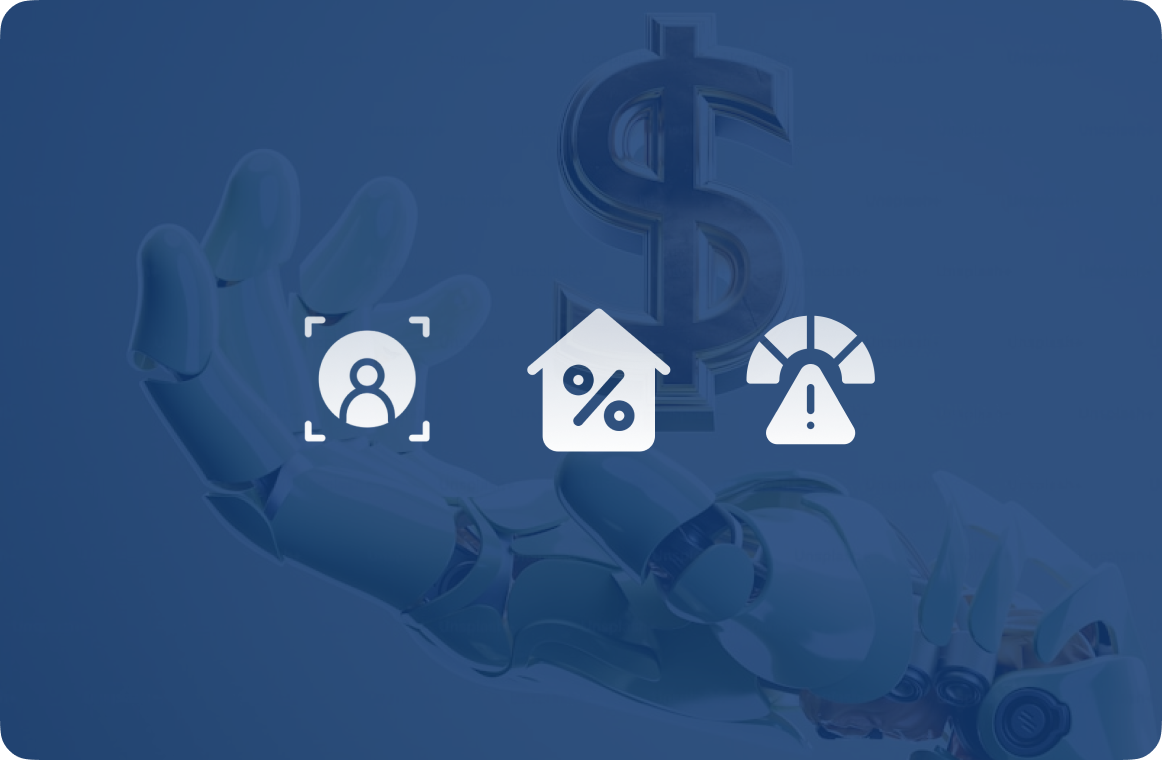From Suggestions to Action: How Credit Unions Are Putting Agentic Al to Work
Prateek Samantaray
July 16, 2025

Is Your Al Still Asking You What to Do?
Let's be honest-most Al in credit unions today still feels like another dashboard
It highlights the problem... suggests a next step... and waits for someone on your team to act.
But forward-thinking credit unions are beginning to flip that script.
They're turning to Agentic Al—a new class of Al that doesn't just assist, it acts. It's capable of carrying out lending tasks from end to end: validating documents, routing exceptions, updating loan statuses—without waiting for a human to click "next."
And it's not theoretical. Credit unions across the U.S. are already using it to:
- Cut origination times by up to 40%
- Scale loan volumes without increasing headcount
- Eliminate repetitive, manual effort from lending flows
This blog explores how real credit unions are using Agentic Al in the field today, what makes it different from generative Al, and how you can start spotting real action-not just marketing fluff.
Generative vs. Agentic Al: Why It's Time to Move Beyond "Smart Suggestions"
You've probably heard it before:
"Our LOS is Al-powered."
But what does that actually mean?
For many lenders, Al today is still in its "suggestive" phase-it can summarize documents, flag anomalies, or even draft responses. But it doesn't do the work. It still needs a person to click, review and route.
That's the core difference between Generative Al and Agentic Al.
Generative Al: Smart, But Passive
Generative Al is excellent at language tasks:
- Drafting emails
- Summarizing documents
- Writing policies or scripts
But it stops short of execution. It can tell you what to do, but it won't actually do it.
A 2024 Cornerstone Advisors survey found that 63% of banks and credit unions using Al tools are still relying on staff to finalize actions-even after the Al "assists." It's like having a very smart intern who still asks, "Now what?"
Agentic Al: Smart and Active
Agentic Al, by contrast, is built to take action-confidently and compliantly. It operates inside your workflows, not outside them.
According to Decisions.com, Agentic Al systems can:
- Validate borrower documents in real time
- Route exceptions without manual oversight
- Pre-fill application data using multi-source intelligence
- Trigger downstream workflows (e.g., credit pulls, disclosures) autonomously
In other words: it's a system of action, not just of record or recommendation.
Why Suggestive Al Falls Short
In high-volume lending environments, suggestive Al creates friction:
| Step | With Suggestive AI | With Agentic AI |
|---|---|---|
| Income Validation | Suggest Missing Info | Completes Validation |
| Exception Handling | Flags for review | Routes to the next best action |
| Document Review | Summarizes Content | Verifies and approves or rejects |
| Workflow routing | Creates alerts | Executes handoff and logs decision |
Over time, these micro-inefficiencies compound.
A study by Whatfix in early 2024 revealed that financial institutions using passive Al saved an average of 7-9 minutes per application.
Those using agentic frameworks saved over 30 minutes per application—without increasing error rates.
Why Agentic Al Is Picking Up Steam
Several factors are accelerating the shift:
- Staffing gaps: Credit unions are facing talent shortages. Agentic Al steps in to automate repeatable decisions.
- Rising member expectations: Consumers want fast, mobile-friendly decisions. Waiting on a back-office review? That's not cutting it.
- Margin pressure: Loan growth is slowing; cost per funded account is rising. Every manual step eats into profitability
As Alkami's 2024 Digital Banking Index notes, "Institutions that automate underwriting and document processing see up to 40% faster originations and up to 2x improvements in member NPS."
Bottom Line: It's Time to Rethink What Al Does
Generative Al is helpful.
Agentic Al is transformational.
In 2025, the competitive edge won't come from how well your system can summarize PDFs or generate insights.
It'll come from how much real work your system can do—accurately, compliantly, and without intervention.
Stay tuned for our next section, where we walk through practical signs to tell real Agentic Al from rebranded automation fluff.
Generative Al is helpful
Agentic Al is transformational.
In 2025, the competitive edge won't come from how well your system can summarize PDFs or generate insights.
It'll come from how much real work your system can do-accurately, compliantly, and without intervention.
Want to see the difference for yourself?
Join us live on August 12 at 2 PM EST for our webinar:
"Generative Al vs. Agentic Al-And Why It Matters for Lending"
You'll hear from:
- Tech leaders building Al-first workflows inside real credit unions
- Operations heads eliminating exception queues without adding headcount
- Product experts explaining how to spot real Agentic capabilities vs. assistive fluff
Whether you're auditing your stack or planning for 2025, this session will give you the lens—and language to separate hype from help.
Because in lending, it's not about having Al.
It's about having the right kind.

More Blogs

Blog
New in Algebrik: Capture the HELOC Market, Onboard Members in Minutes, and Outsmart Identity Fraud

Blog
Why Legacy Loan Systems Are Guaranteeing Failure (And the New 30% Opportunity)

Blog
Is Your Technology Handing the Next Generation to the Competition?
